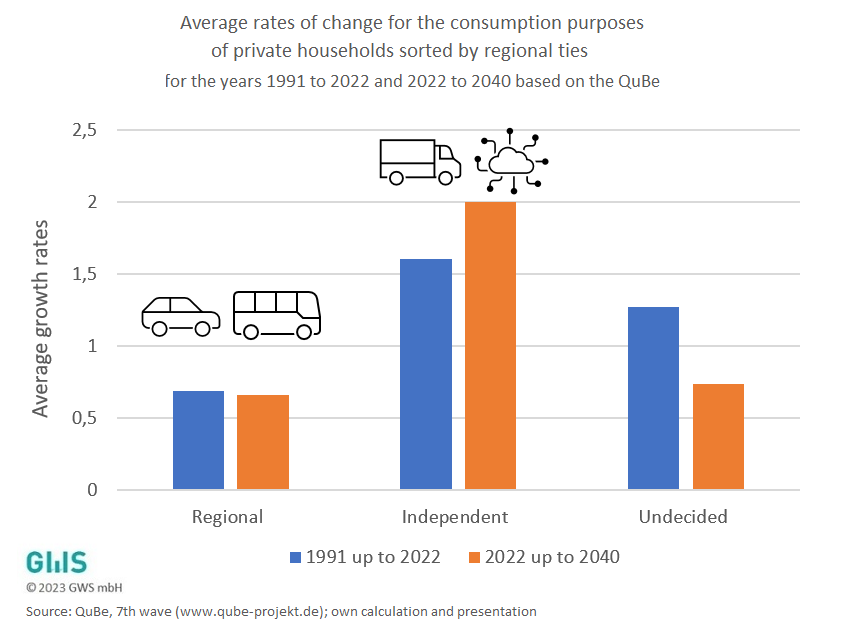Private consumption and the region: a weakening bond?
Our figure of the month 12/2023
Is consumer spending by private households still regionally bound? This question is crucial for regional development, as household spending accounts for around 50 % of gross domestic product, at least at a national level. If the proportion of goods to be provided regionally falls, it is possible that there will be a decoupling between the population and its consumer wishes.
To get an impression of this, the 47 consumption purposes according to which private household consumption is categorised at the federal level in the national accounts are divided into three categories: 1) regionally bound, 2) independent of the region in which the household is located and 3) not corresponding to the previous categories.
Food, personal services, mobility and health services, for example, were allocated to the first group. The second category includes energy supply, telecommunications services and package holidays. The "undecided" category includes, for example, expenditure on clothing, which is purchased both online and to a considerable extent in bricks-and-mortar stores.
As a result, it can be seen that consumption purposes that are not regionally linked are particularly likely to increase (Figure 1). The figure also shows that this trend will accelerate in the future.

So what does this mean? As indicated in the figure, regionally localised consumption purposes rely on people being mobile. This is not the case for those that are not regionally bound - here, however, goods still have to be transported and network access is becoming increasingly important. Furthermore, a bond is loosening: Local households continue to influence the financial situation, e.g. via income taxation and thus income tax allocations to municipalities, but business tax tends to be concentrated in places. It is possible that the link between the necessary financing of local infrastructure and the financial resources required for this is loosening.
The situation is not yet dramatic, as 63% of consumption is still regionally bound (simply due to housing). And there can certainly be different assessments as to which use of consumption is really tied or untied. This analysis should therefore only be seen as an estimate. But the analysis gives an indication of a future situation in which regional disparities are greater than they are today. This may be the case if (network) infrastructure maintenance and expansion at local level and the financing options diverge (further).
Other figures can be found here.

